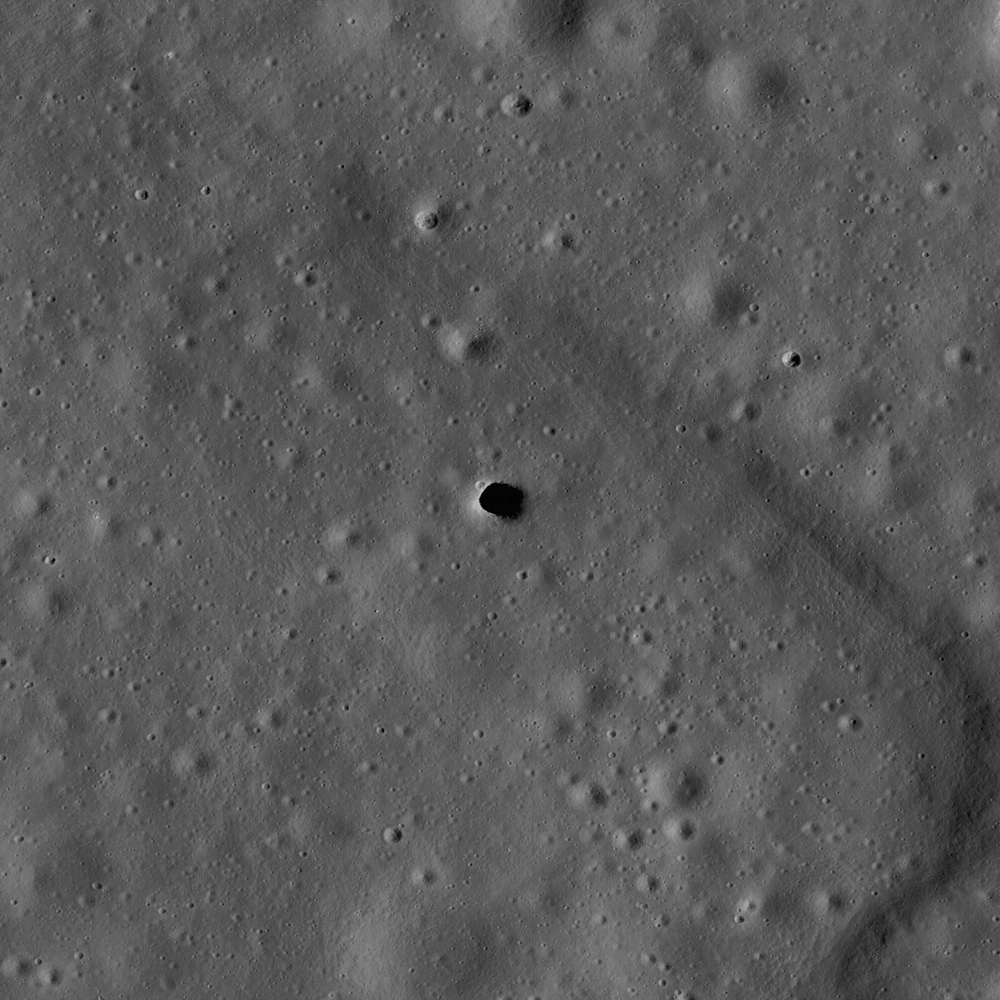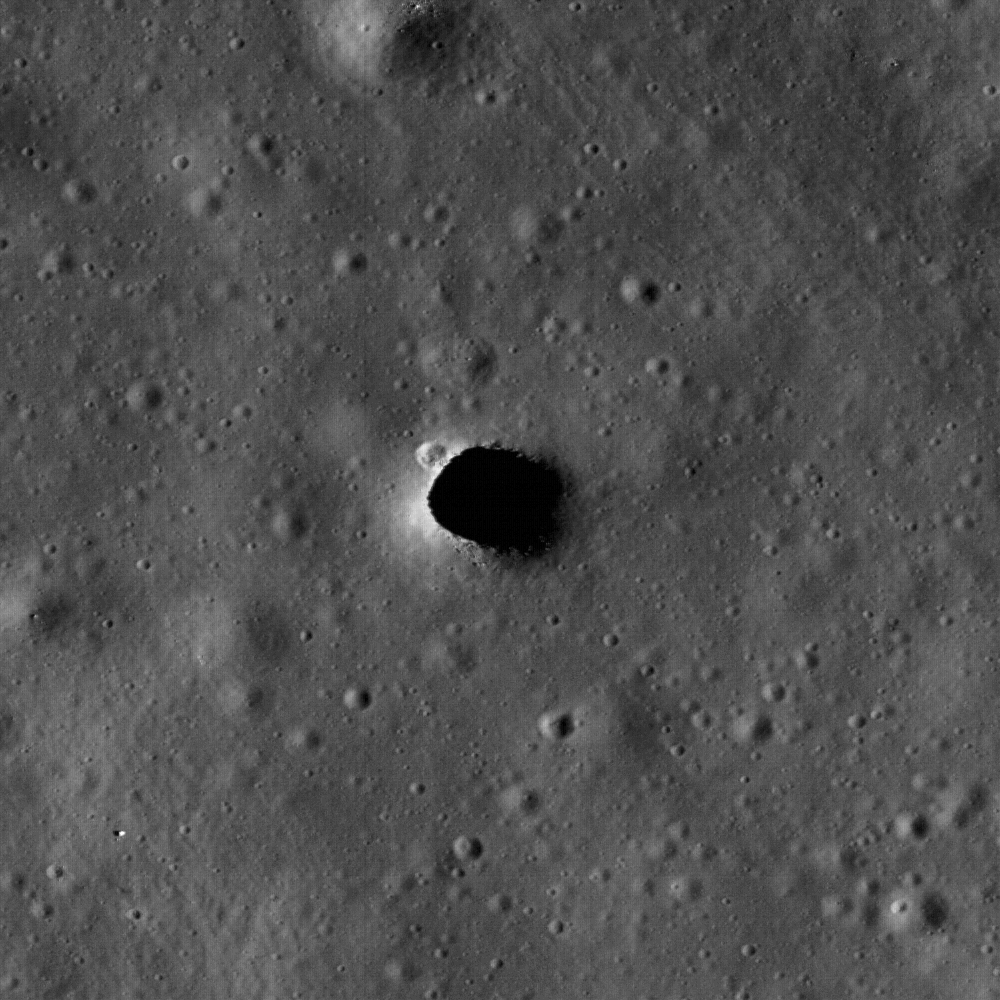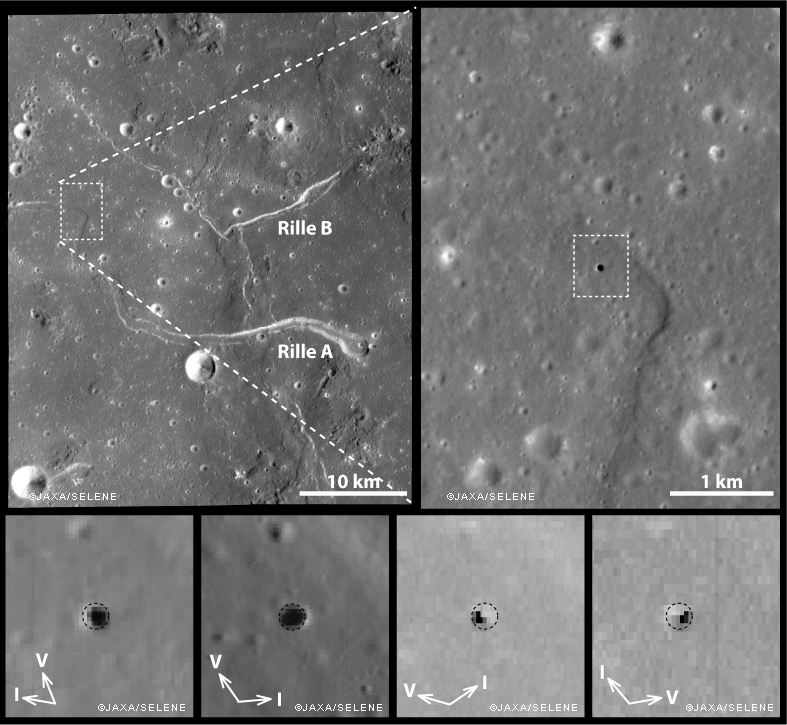

The Marius Hills pit was discovered in images from the Japanese SELENE/Kaguya Terrain Camera and Multiband Imager, and reported in Geophysical Research Letters. The Japanese team, led by Junichi Haruyama, made multiple observations of the pit using both the Terrain Camera and the Multiband Imager at resolutions as high as 6 meters/pixel (see below). The LROC image presented here (above), at 0.5 meters/pixel, is the highest resolution image of the Marius Hills pit to date! (The SELENE/Kaguya Terrain Camera team also made a fly-over movie of the hole.)

How did the Marius Hills pit form? The Marius Hills region was quite volcanically active in the past, and contains numerous volcanic features, including sinuous rilles. Sinuous rilles are long meandering channel features, like those labeled Rilles A and B in the above figure. Before the Apollo missions, sinuous rilles were thought to be formed by running water on the surface of the Moon! However, today we know that sinuous rilles form in two different ways: as open lava channels and/or as lava tubes, many of which subsequently collapse. Because the Marius Hills pit is in the middle of a sinuous rille, it likely represents a collapse in the roof of a lava tube. The pit itself may have been caused by an impact that punched through the lava tube roof.
Lava tubes might be useful as locations for lunar bases (see a report by Fred Hörz of JSC here). The interiors of lava tubes could protect human explorers from different aspects of the lunar environment, including cosmic rays, meteorite impacts, and the extreme temperature differences between the lunar day and night. Just like caves on the Earth, lunar caves, including lava tubes, have temperatures that are constant.
Browse the entire LROC NAC image to explore the intriguing Marius Hills pit and its surroundings!
Inspect other pit craters in Mare Tranquillitatis and Mare Ingenii.
Published by Carolyn van der Bogert on 1 March 2010